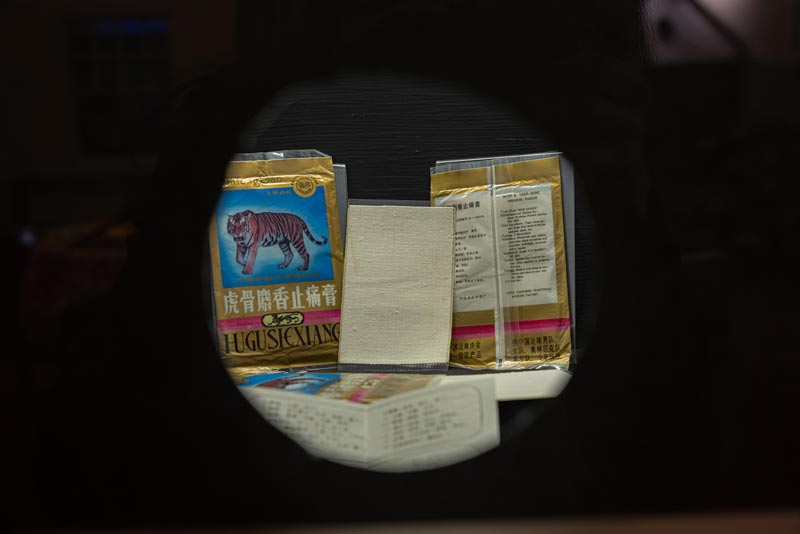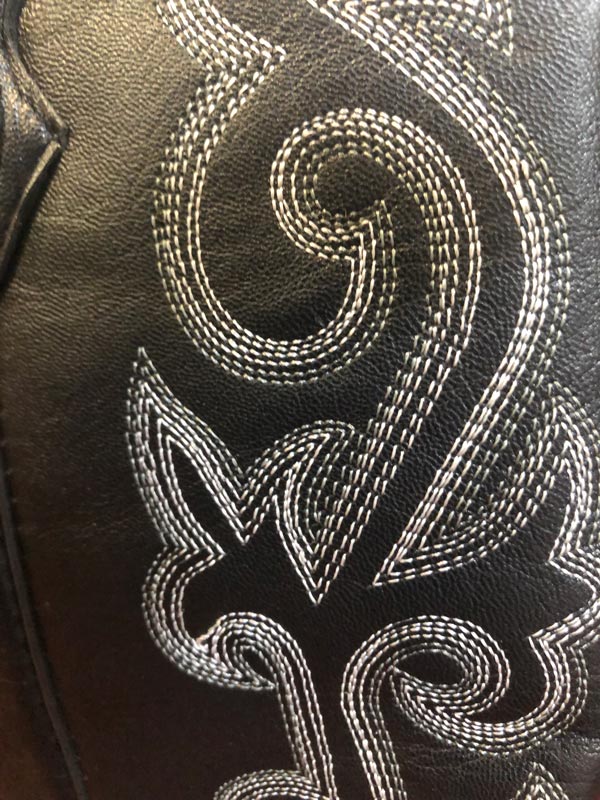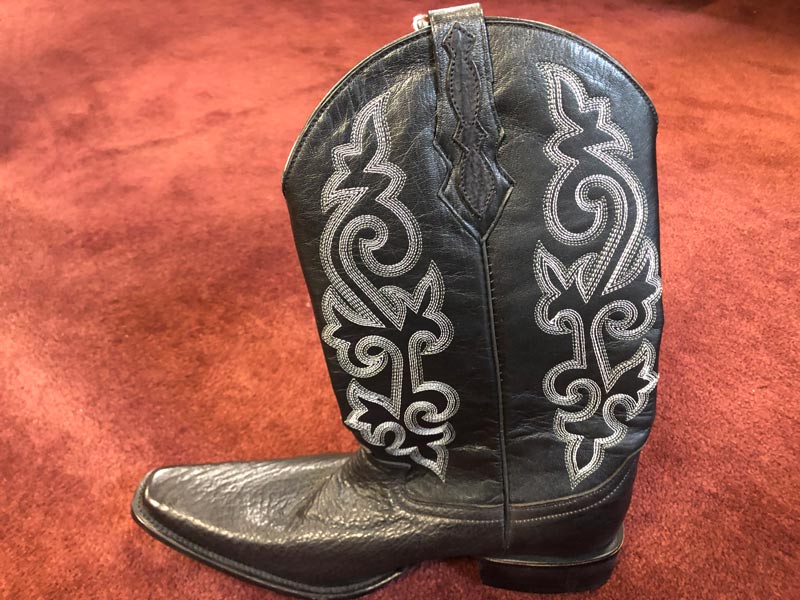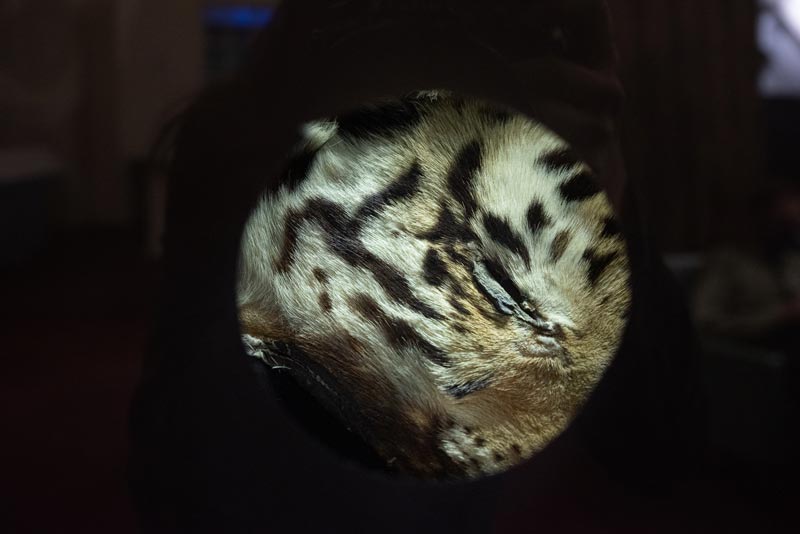-
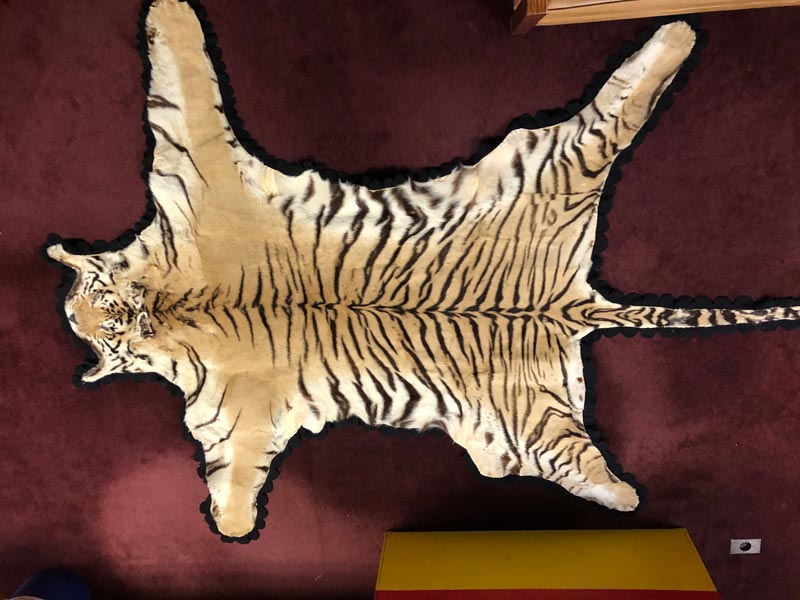
Tiger rug
Tigers (Panthera tigris) are protected by the U.S. Endangered Species Act (ESA), which prohibits most sales
and movement of tiger products and parts. The market for tiger rugs cut the global
population of wild tigers from an estimated 80,000 to 3,500 in just the last century.
Poaching continues to threaten tiger populations in the wild, despite global efforts
to restrict the trade.
On loan from Delaware Museum of Natural History / U.S. Customs
-
Traditional tiger medicine
Tigers (Panthera tigris) are threatened by habitat destruction, but some cultures perpetuate the trade because
they believe that tiger parts have health benefits, or can even cure diseases like
rheumatism or typhoid fever. The gauze papers seen here are laced with pulverized
tiger bones, and would be placed on the affected area. Practitioners of some Chinese
traditional medicine have created a market where tiger bones can sell for as much
as $115 USD per pound in the illegal wildlife market.
On loan from Delaware Museum of Natural History / U.S. Customs
-

Monitor lizard shoe
Monitor lizards (Varanus) are native mostly to Oceania and Asia. Despite being considered an invasive species
here in North America, five monitor lizard species are protected by the Convention
on International Trade in Endangered Species of Wild Fauna and Flora (CITES). They
are mostly prized for their skin, which can be transformed into leather shoes like
this one.
On loan from Delaware Museum of Natural History / U.S. Customs
-
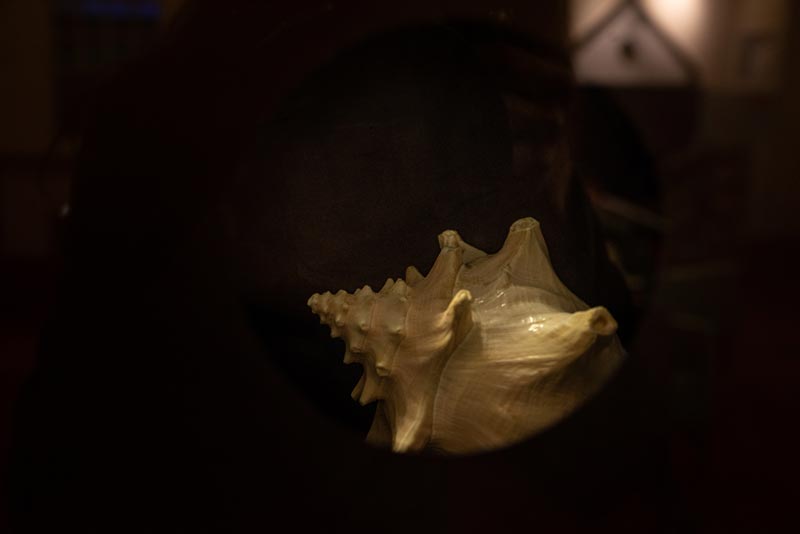
Queen conch shell
Queen conchs (Strombus gigas) are mollusks native to the Caribbean and the southern coasts of the United States.
Conch meat is eaten as a delicacy and their shells are used as souvenirs and jewelry.
Due to their slow growth and increasing harvest from humans, queen conchs are now
overfished. Florida has banned the collection of all living queen conchs.
On loan from private collection
-
Shark Skin Boot
Many species are sharks are threatened or endangered—either from overfishing (shark
fin soup is a delicacy in some countries) or to make household products such as cosmetics,
pet food and leather; approximately 100 million sharks are fished every year. This
is an especially big problem because sharks mature late and have low reproduction
rates. 25% of all sharks are threatened with extinction.
A wide variety are hunted specifically for their skins to make leather. While some
shark leather is produced as a byproduct of fishing, others are hunted specifically
for their skins. This shark skin boot was made in Mexico (as one can see from the
intricate decorative motif) but does not detail the type or origin of the shark, and
was confiscated.
On loan from Delaware Museum of Natural History / U.S. Customs
-
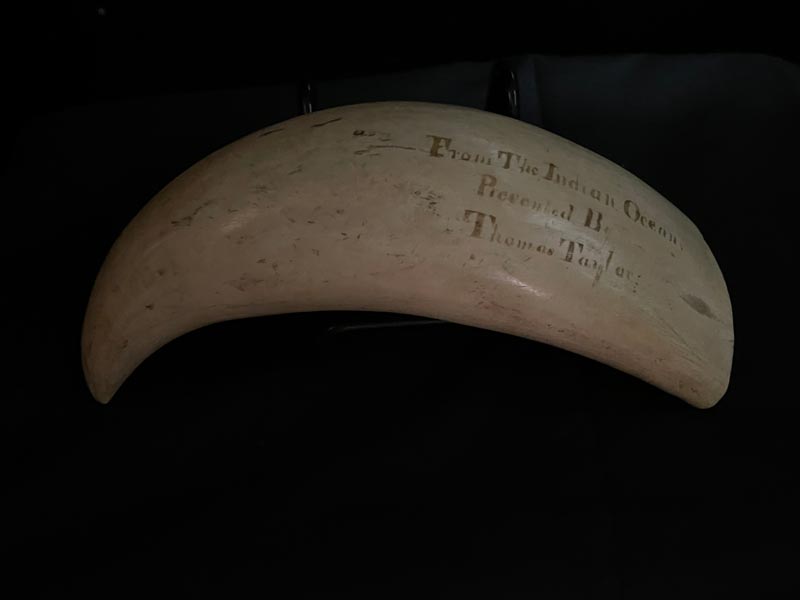
Sperm whale tooth
Whales have been hunted for their blubber for hundreds of years, but sperm whales
(Physeter macrocephalus) are also hunted for their teeth. Sperm whale teeth are similar to ivory and are
most commonly used to make scrimshaw, or works of art engraved on whale bones or teeth.
Sperm whale populations are slowly recovering thanks to global conservation efforts,
with the International Union for Conservation of Nature (IUCN) recently upgrading
their status from endangered to “vulnerable”.
On loan from WCU Special Collections
-
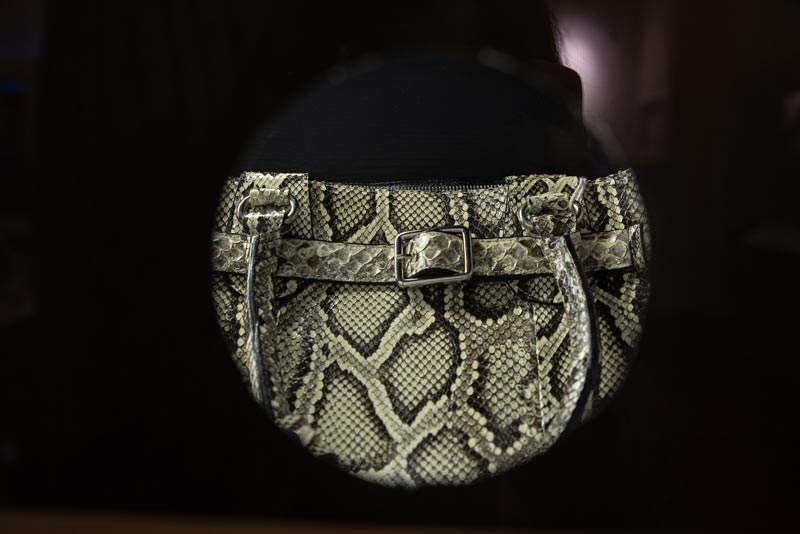
Burmese python handbag
Pythons (Pythonidae) are poached for bushmeat and to make snakeskin leather products like this handbag.
The global python skin trade is estimated to be a $1 billion USD business. Python
farming is difficult and expensive, leading poachers to illegally hunt and raid farms
to supply the growing demands for snakeskin.
On loan from Delaware Museum of Natural History / U.S. Customs


